Mr. Johnson has a job for your team. Gather your runners—there’s nuyen to be earned. Shadowrun Crossfire is a cooperative deck-building game from Catalyst Game Labs, set in the cyberpunk fantasy Shadowrun RPG universe.
At a glance: Shadowrun Crossfire is for 1 to 4 players (though ideally 4 players), ages 13 and up, and takes about 30-60 minutes to play. It retails for $59.99. The mechanics could be learned by younger players, but due to the content (which is based on the Shadowrun RPG) and some language, it’s probably still best to stick with older kids.
Components:
- 3 Mission sheets
- 1 Client card
- 1 Dragon Rules card
- 1 Dragon Art card
- 50 Nuyen tokens
- 20 Damage tokens
- 6 Health tokens
- 6 Max Health tokens
- 12 Generic markers
- 40 Normal Obstacle cards
- 40 Hard Obstacle cards
- 60 Black Market cards
- 50 Crossfire cards
- 36 Basic cards
- 10 Runner cards
- 4 Role cards
- 100 Upgrade stickers
- 1 Welcome to the Sixth World Booklet
The components are decent quality—all of the tokens are cardboard punch-outs, pretty thick cardboard and easy to identify. The Damage tokens are triangles that you use to mark the damage track on an obstacle, and I’d say it’s not a great system because it’s easy to bump. Might have been nice to have a larger track on the card with just a cube placed on it or something.

The Mission cards have a lot of text on them, but they’re basically miniature rule sheets. Each mission has slightly a slightly different way to play: the Crossfire mission is the basic scenario—fight off three rounds of obstacles; Extraction requires you to keep a Client alive; Dragon Fight pits you against a very powerful enemy. Additional Missions can be downloaded from the Shadowrun Crossfire website.
The obstacle cards and Black Market cards have great art on them. The 10 Runner cards give you two choices of each metatype (Human, Elf, Dwarf, Troll, Orc) that are identical in gameplay but have different artwork, and if that’s not enough you can also get the Character Expansion Pack that gives you 20 new runner cards to choose from.
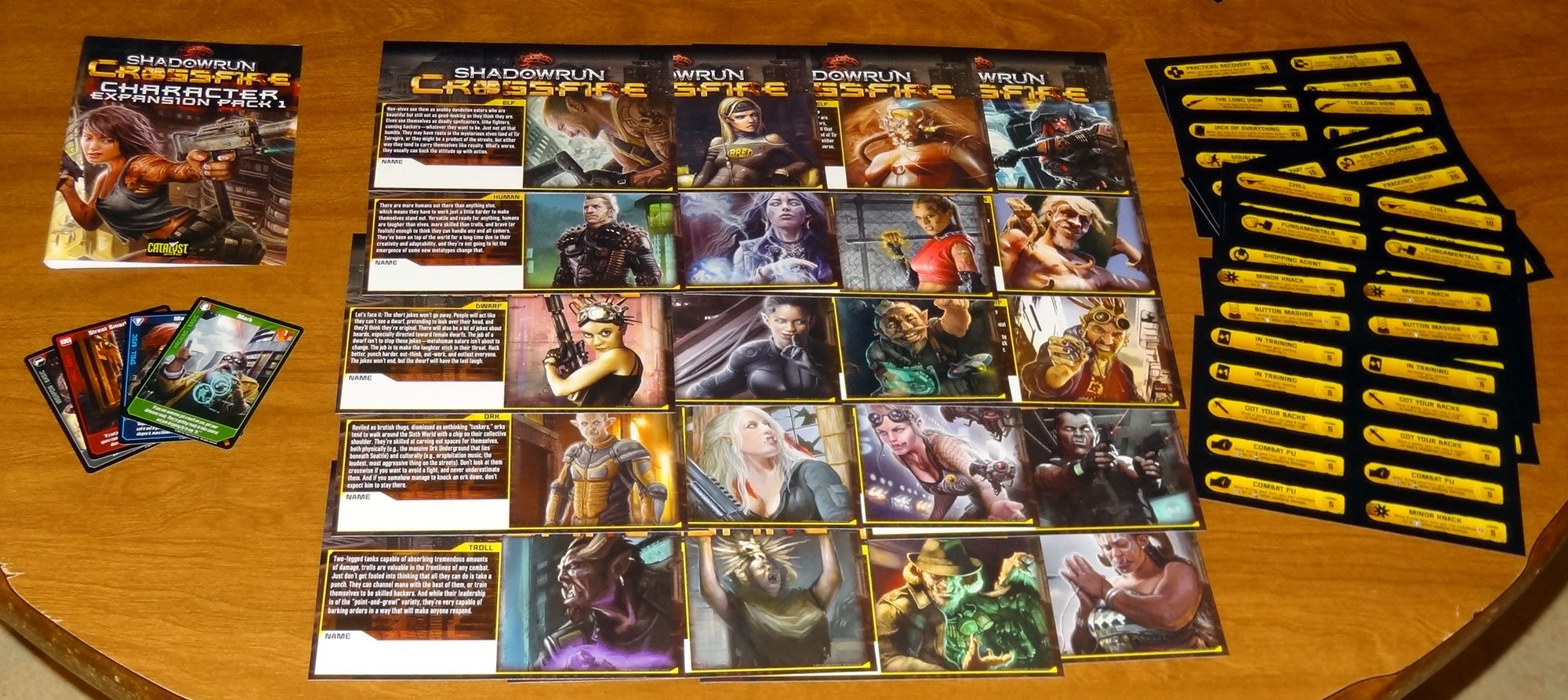
Since I wasn’t familiar with the Shadowrun universe, the Welcome to the Sixth World booklet was a great way to learn a bit of the background. It’s not necessary for playing the game, but the 24-page booklet is a good summary of what the world is all about. Shadowrun veterans probably won’t need it.
The box isn’t so great—the plastic insert reminds me of the one that comes with Thunderstone—room for lots of cards, plus a few unspecified wells in the center—and until there are a lot of expansions, it has a lot of empty space.
How to play
The rulebook is available as a PDF here.
Shadowrun Crossfire is designed so that all four roles (Street Samurai, Decker, Mage, and Face) are always present, so if you have fewer than four players then some players will take more than one role card, but will still play just one character. For the sake of simplification, I’ll explain how the game works with four players.

Each player starts with a Runner card—it shows your metatype, starting hit points, starting hand size, and starting nuyen (money). There’s a spot to write your name (or your character’s name), four upgrade slots, and a section to record Karma earned from missions. The Runner card is what will carry over each time you play: as you earn Karma, you’ll be able to upgrade your character, placing Upgrade stickers in the slots. You take nuyen as indicated on the card, and mark your health with a token.
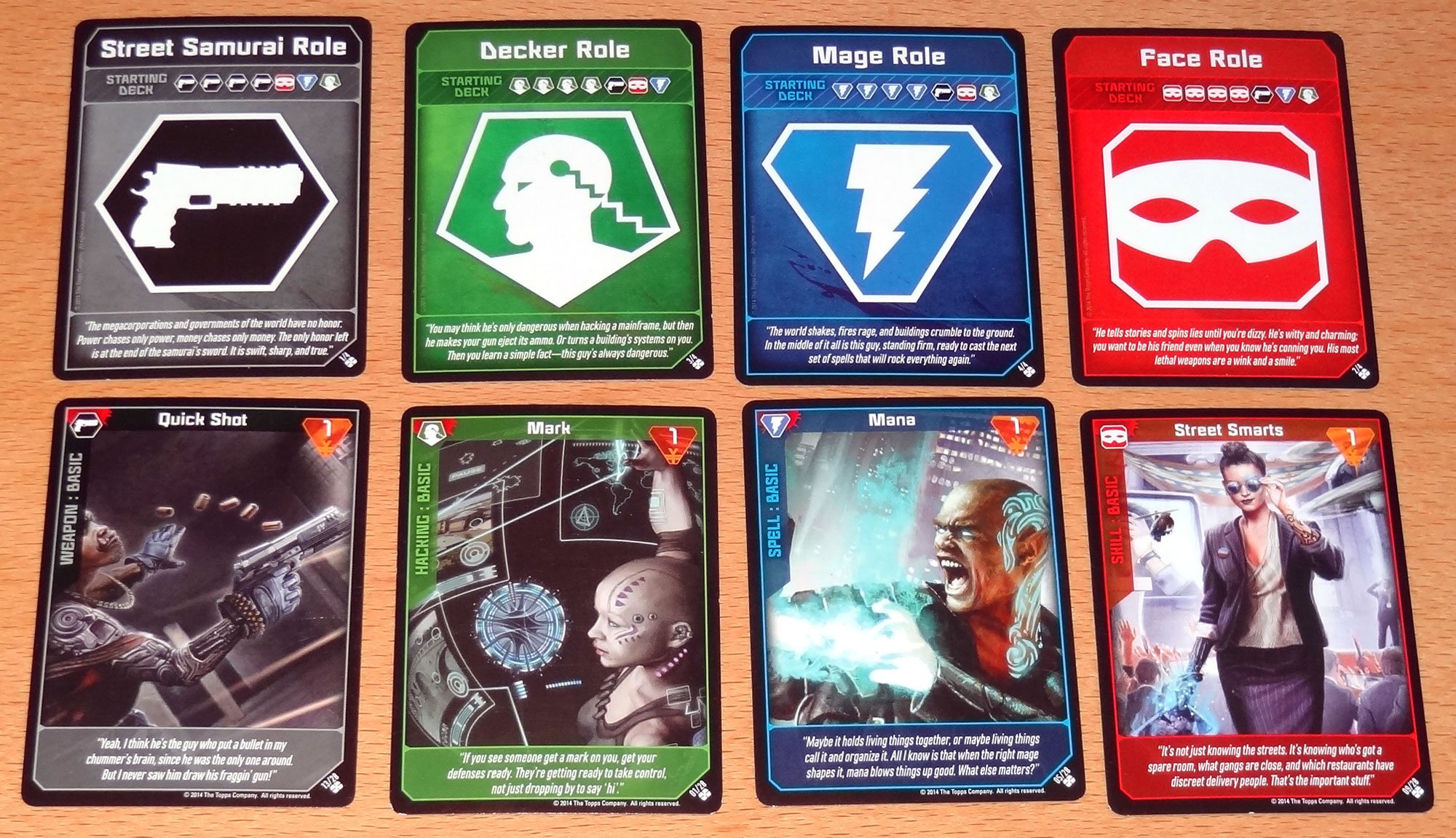
Each player takes one of the role cards and a starting deck of 7 cards. The Basic cards each have 1 symbol in the top corner; everyone starts with four cards matching their role and one of each of the others. Shuffle your deck and draw your starting hand—each metatype has a different starting hand size, but there is no hand limit.
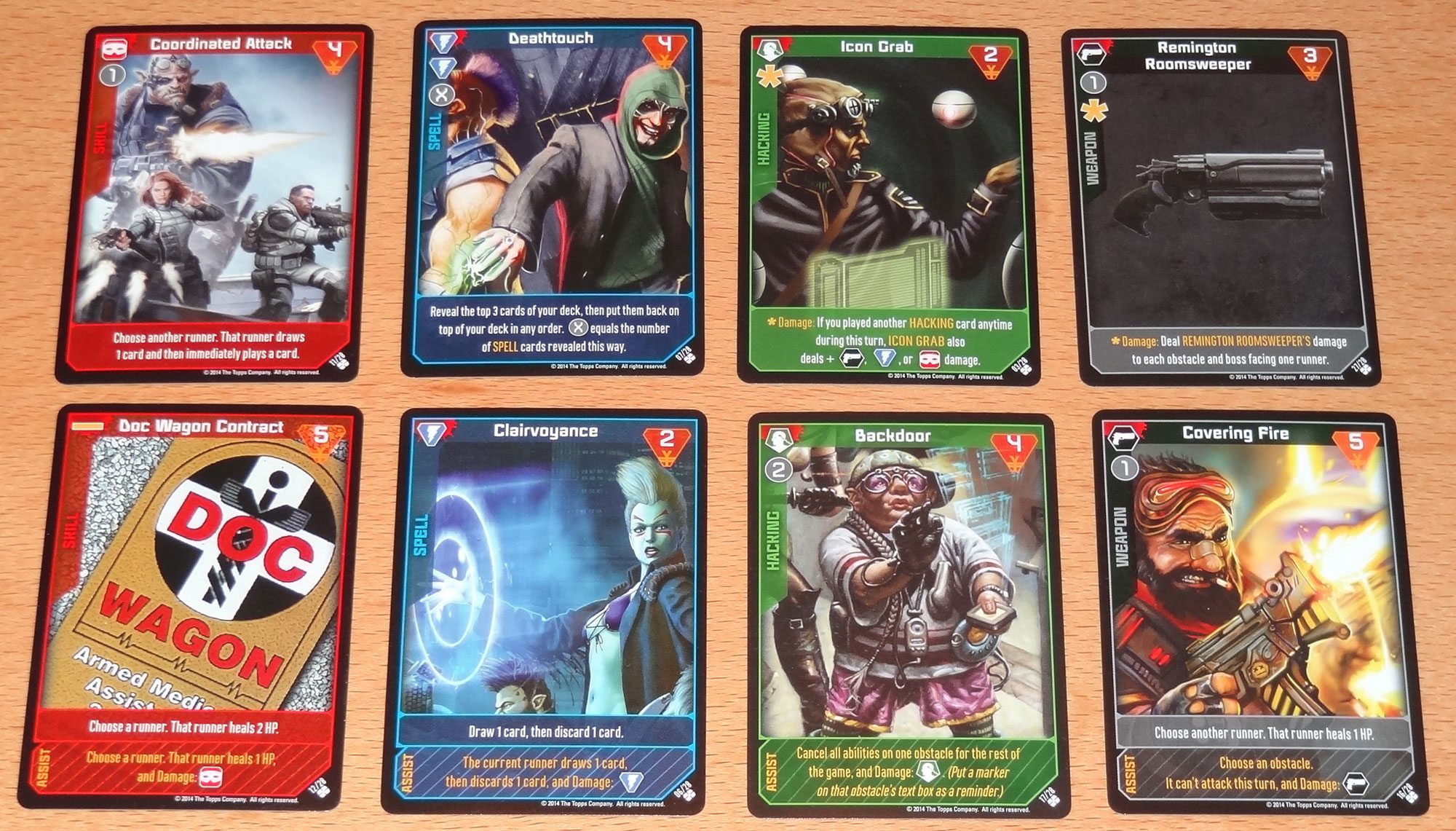
The Black Market deck is shuffled, and six cards are dealt out on the table to form the Black Market. Whenever a card is taken from the Black Market, another is drawn from the deck to replace it. Black Market cards may show some number of symbols in the top left corner—these are primarily used for fighting obstacles. The orange nuyen symbol at the top right is the cost to purchase the card. At the bottom there may be text indicating other abilities or effects you get when playing the card. Finally, some cards have an “Assist” section, which means that the card may be played during another player’s turn.

There are two Obstacle decks, Normal and Hard, indicated by the 1 or 2 bullet marks on the backs. These should be shuffled separately. Each obstacle has a damage track at the top—this indicates the number and type of symbols you’ll need to play, in order, to defeat the obstacle. The nuyen icon at the top right shows the payout for defeating the obstacle. The red spatter at the bottom right is the amount of damage the obstacle will deal to the runner. Finally, there are various effects (and sometimes flavor text) listed at the bottom. Obstacles also come in the four different colors, matching the four roles.

Finally, you shuffle the Crossfire deck. The Crossfire cards are events—you’ll discard the old one each round and flip a new one. Some cards have multiple effects, some have effects when the card is discarded, and some have effects only if the Crossfire Level—the number of cards in the Crossfire discard pile—is high enough.
Depending on which mission you play, you may have other things to set up as well. Generally, though, you’ll deal out some obstacles—one to each runner, potentially more.
The round starts with a new Crossfire card. Then, each player will take a turn, and another round starts.
During your turn, you play cards, apply damage (that you’ve played), take damage from obstacles, then draw and buy cards.
When you play cards, you use any effects on the cards, and then place them next to the obstacle you’d like to damage. You can attack any of the obstacles, not just the one in front of you. The symbols in the top left of the cards are used for damage, and match up with the symbols on the obstacle’s damage track. Grey circles mean it must be that number of symbols but can be any mixture of colors.

Damage to an obstacle must be applied in the order shown. For instance, for the Grey Ops Rigger Team pictured above, you must first apply 3 of any color, then 1 green, then 2 of any color, then 1 blue, and so on. The Damage token is used to keep track of which level you need to play next.
Once you’ve played all your cards, then you apply damage. Any obstacles that were defeated are discarded, and the team collects the nuyen indicated on the card. Nuyen is awarded as evenly as possible, starting with the current player. Some obstacles have effects when revealed, and some have effects when they are defeated.
After applying damage from cards you’ve played, you take damage from any obstacles still remaining in front of you, as indicated in the red splat icon.
If your health reaches 0, you are Staggered, which severely limits your options. Take damage while you’re Staggered, and you go Critical—which means you’re out of the game for the rest of this mission, and the rest of the team has to try an abort run to get out of there.
Finally, if you’re not Staggered, you draw and buy cards. If you have 3 or fewer cards in your hand, you draw 2 cards. Then you can spend nuyen to buy any number of cards from the Black Market, putting them into your hand.
The Goal of each game depends slightly on the mission, but essentially you need to defeat all the obstacles. The basic Crossfire mission has you playing three “Scenes” where you defeat an increasing number of obstacles each Scene. The Extraction mission has seven Scenes, and you have to keep the Client alive until the end. And the Dragon Fight mission has you fighting an incredibly difficult dragon, while also dealing with obstacles he throws your way.
If you succeed in the mission, everyone gains Karma, marking it on their Runner cards. Karma can be spent on Upgrades. If somebody goes Critical, the team has a chance to try an abort run—successfully escaping still earns you a little bit of Karma, but not much.
The way the missions are set up, you play Crossfire several times until you earn some Karma. Once everyone has at least 5 Karma worth of upgrades, then you can try Extraction. But the Dragon Fight is a long ways off: everyone should have at least 70 points of Karma before attempting that one.
You can also scale the difficulty of the missions by increasing the starting Crossfire Level, or choosing some other additional difficulties. These will result in bigger Karma rewards if you fulfill the mission.
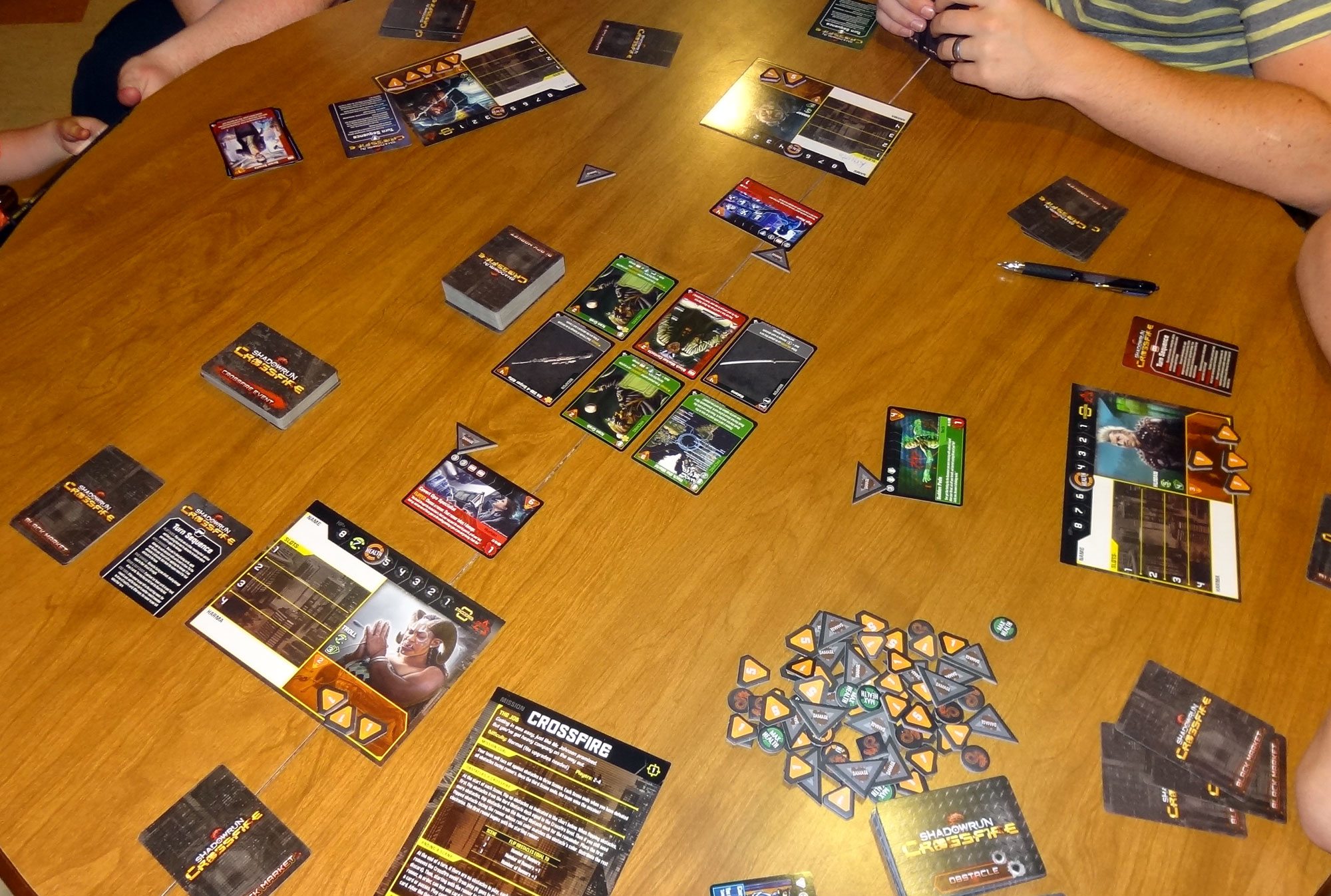
The Verdict
It’s hard for me not to compare and contrast Shadowrun Crossfire to the other RPG-based cooperative card game I’ve been playing, the Pathfinder Adventure Card Game, since they do sound like they could be similar based on a quick description. However, the games have completely different gameplay so I’ll try to evaluate it on its own merits.
Admittedly, I’m not the main target audience for Shadowrun Crossfire: I played neither the RPG nor the videogames, and knew very little of the Sixth World coming into the experience. But I do like deck-building games and cooperative games, and I like the idea of changes that carry over from one session to the next (a la Risk Legacy), so I wanted to give this one a try. I did play a couple times with people who were familiar with Shadowrun, and they were able to explain various enemies and abilities more than the game itself does.
The mashup of cyberpunk and fantasy isn’t a typical genre (like steampunk or swords-and-sorcery fantasy), so those who are already fans of Shadowrun are more likely to buy into the theme right away. I don’t think the theme interferes with gameplay for newbies like me, but you may find yourself wondering things like “What’s the Face role mean?” from time to time.
Shadowrun Crossfire does have a bit of the traditional deck-building feel to it: you always start with a small deck of weak cards, and build up your deck as you play. The difference is that as you build up your character, you’ll get to start with some bonuses: more money or health, for instance. Also, the deck-building is only a means to an end: you’re trying to keep yourself and your teammates alive, and kill off the obstacles before they get you. Everything you do should be furthering those goals.
The game can be pretty brutal, even playing the beginning mission, and you can expect to lose (or at least be forced to abort) every so often. That’s typical of cooperative games, of course: if you win every time, then it’s too easy. The downside in this particular instance is that it can feel like grinding—I’m collecting a tiny bit of Karma at a time, hoping to save up enough to buy a single upgrade. It’s hard to imagine getting to 70 Karma so you can play the third mission when you’ve had to play the Crossfire mission three times just to buy your first upgrade. This is probably my primary complaint about Shadowrun Crossfire: it’s a cooperative game, but also a campaign game. In the former, you want players to lose often. In the latter, you want them to make progress and level up. Whether the game hits the right balance for you may be a matter of taste.

There is a lot of room for strategizing, though: do you attack the obstacle in front of you, or go after the one sitting in front of the weakest player? Do you buy a few cheaper cards to make your deck stronger right away, or do you save up your nuyen to buy the big gun—assuming you live long enough? There are a lot of nice decisions to be made throughout the game, and I like the various obstacles and Black Market cards.
I also like the way that your strategy is influenced by your metatype (race) and your role. The Dwarf starts with more money but has less health. The Troll has a lot of health, but not much money. Which one should be the Mage? The Street Samurai? Although any player can buy any card, you’ll discover that cards of one type build on each other. Many Hacking (green) cards become more powerful if you have other Hacking cards in your deck or discard pile—and since the Decker starts with four basic Hacking cards, it makes sense to let him buy more. If each player tends to specialize, you can become a better team because everyone can use their own expertise.
In the end, Shadowrun Crossfire is a fun game but would probably be even better for those who are already fans of the Shadowrun universe. Having played it with Shadowrun fans, I can attest that it’s a lot more exciting when somebody knows what all the obstacles are. I also think the game will ramp up as players earn upgrades, but since I haven’t been able to play with the same players multiple times, we keep starting from scratch and that makes it harder to feel like I’m making progress. Ideally, it’s a game that you would want to get a group together to play regularly in campaign mode, but the ease of setup also allows for one-off sessions.
Find out more at the Shadowrun Crossfire website, or order it from Amazon.
Disclosure: GeekDad received a review copy of this game.
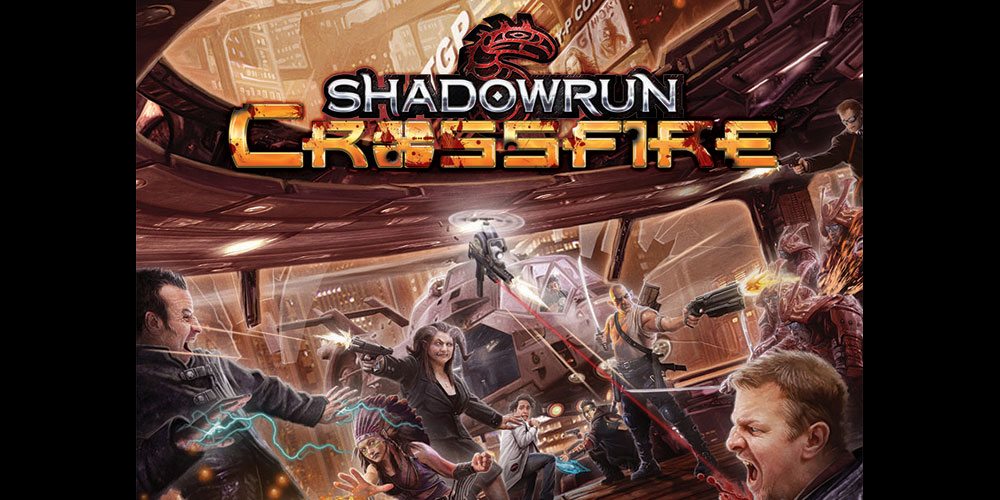
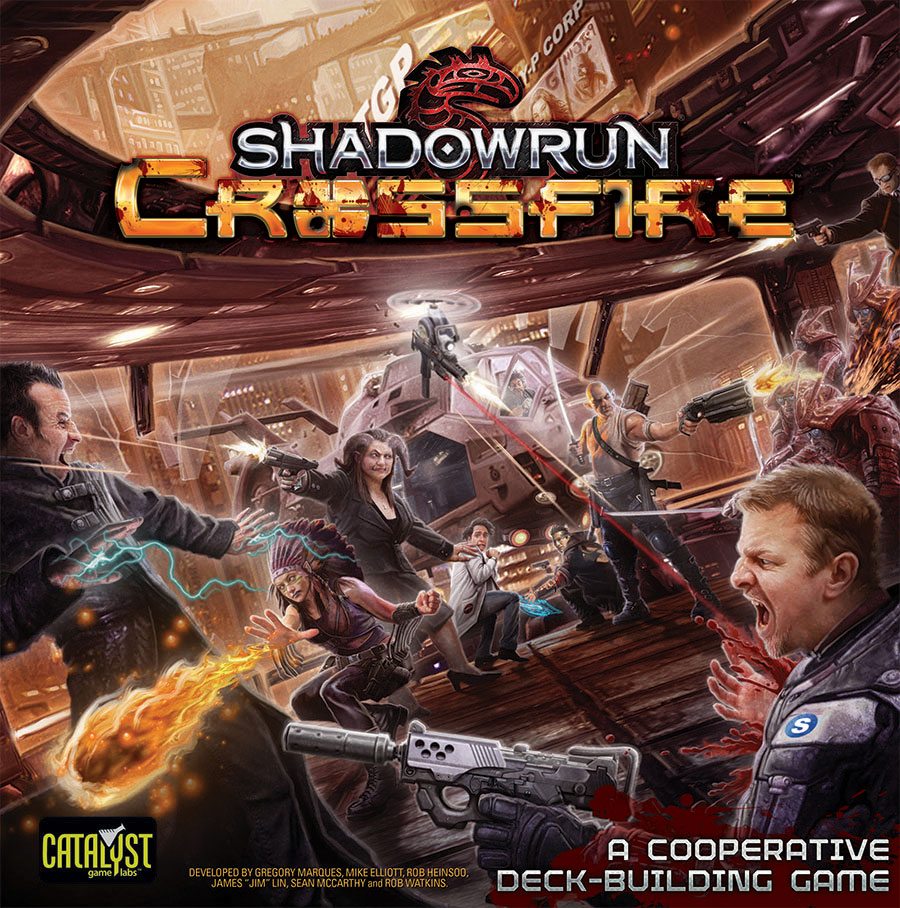


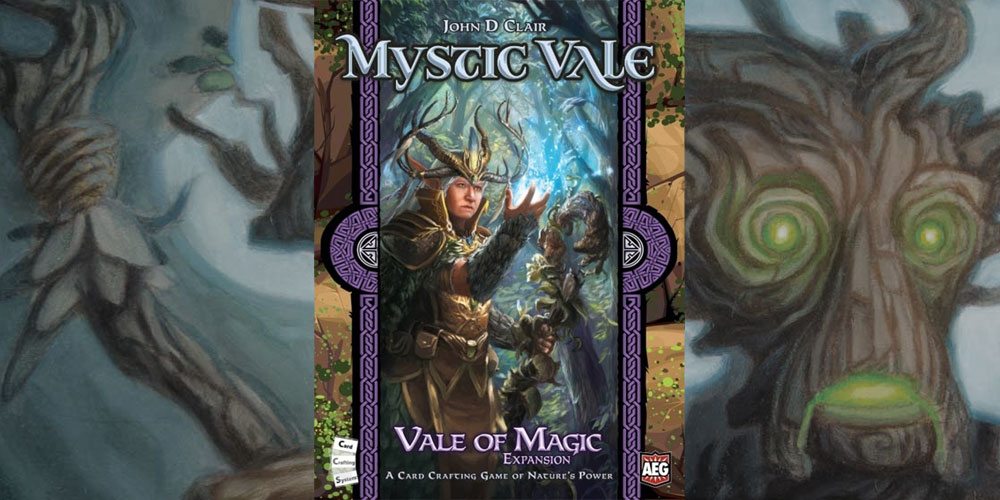
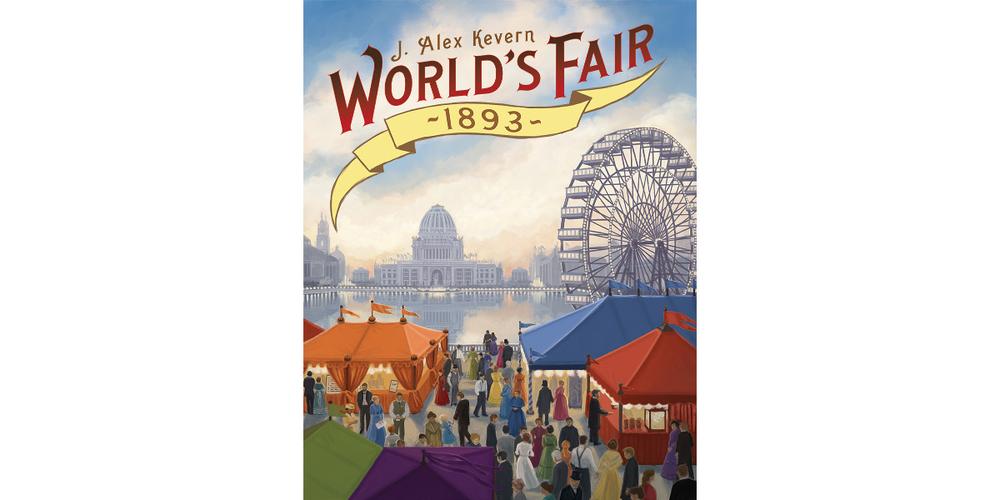
Nice review. I am a big fan of the Shadowrun setting and I’ve really enjoyed playing Crossfire. I also play PFACG and they are fairly different. I find the pressure to be much higher in this game. Crossfire is less balanced, deliberately, which can throw some very surprising situations at the players and force them to think quickly and chart a path together past the sudden danger. That uncertainty really reflects the Shadowrun universe, where things often go wrong.
Fans may be interested to know that, as with PFACG, Board Game Geek has some excellent resources, including printable versions of the runner cards and forum threads with tips on strategy. http://boardgamegeek.com/thread/1257738/feel-giving-read-first
I Love Crossfire. It is brutally hard though. But so much fun. Regarding Karna: Tom Vassel reminded me of a fact in his review: it’s your game. You want to start with 20 Karma? Start with 20 Karma.
The bgg thread about the roles and their roles is required reading.
Well, sure, but if you’re doing campaign mode then it does feel like cheating. If you were starting an RPG, sure, everyone could start at level 6 instead of 1. But shouldn’t the game be fun at level 1? If it’s not fun until level 6, then level 6 should be level 1.
Well for me the best thing ti tinker rules was to give extra karma for each scenario. +1 for fail, +2 to abort, +3 to win and you get some expansion even if you don’t win, but you still build you character from the scratch!
Also pure +1 to each options is just fine. Five lost game and you have learn something for the future (or +2 is you need more speed)